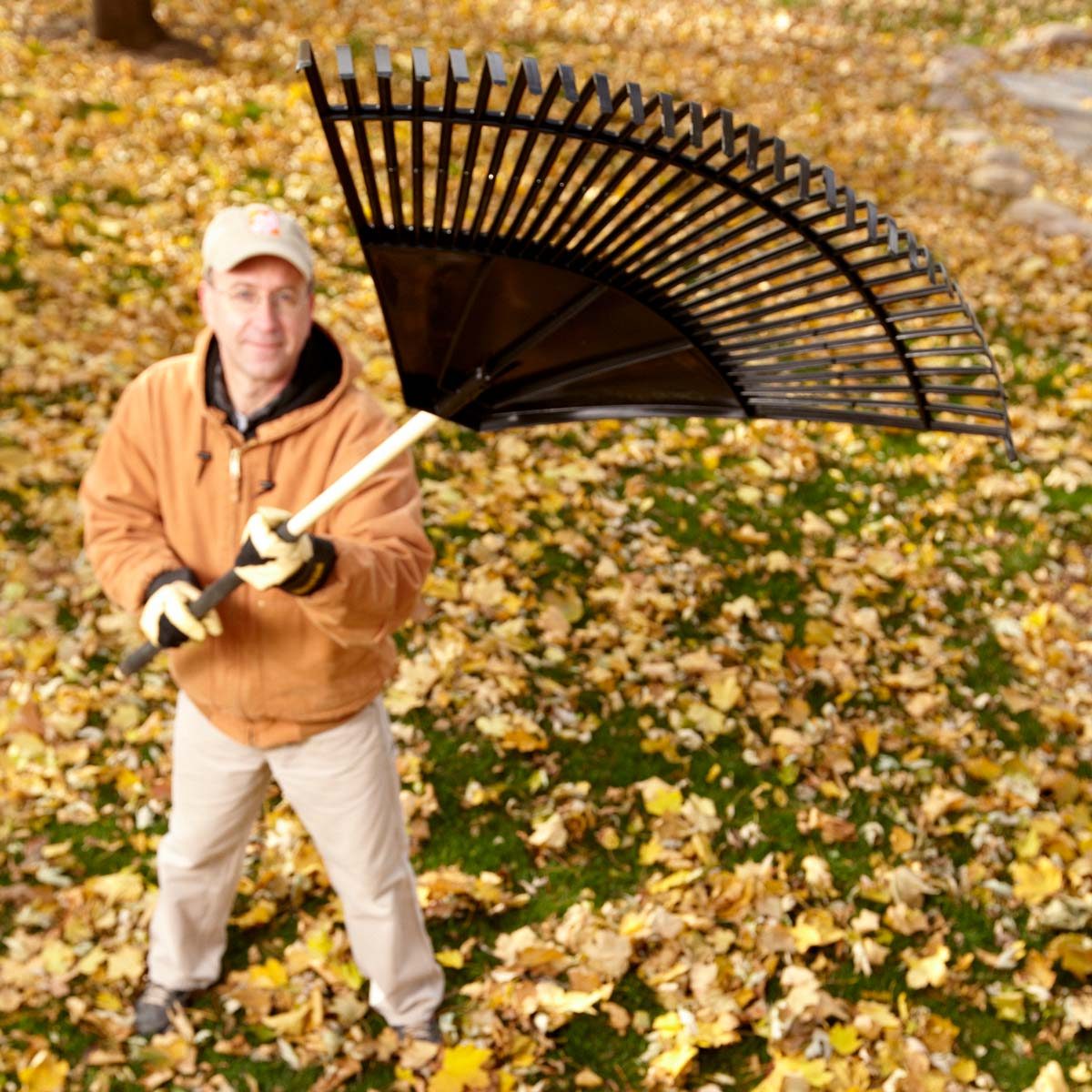
Get the Right Rake for the Job
The first step in tackling fall yard maintenance is to have the right tools on hand. The most popular rakes are beloved just for their size—a big rake makes the job smaller. Most home centres carry rakes up to 75 centimetres wide.
Other homeowners swear by “no-clog” rakes—the tines don’t skewer leaves, so you don’t have to stop and unclog the rake. Several manufacturers make them, also in widths up to 75 centimetres.
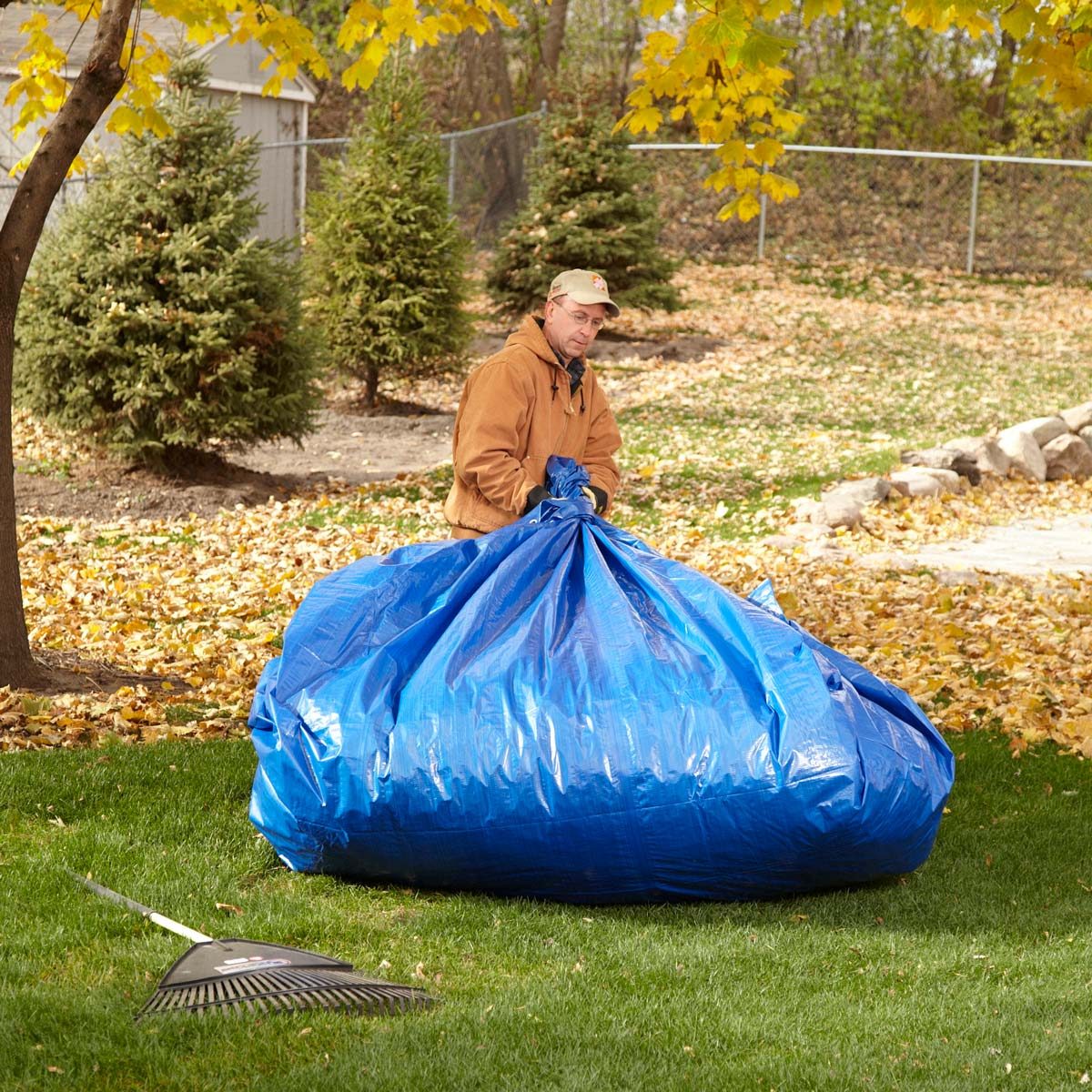
A Tarp Beats a Trailer
Instead of bagging or hauling leaves, rake them onto a tarp that you can drag around your yard. It’s even easier if you get your kids to do it!

Fall Grass Lawn Fertilizer
A mulching mower shreds leaves into tiny flakes that settle into the fall grass and decompose into natural fertilizer. You might have to go over some areas two or three times to completely chop up the leaves. Still, it’s fast and easy and it makes the grass happy.
Find out 18 things you should never do to your lawn.
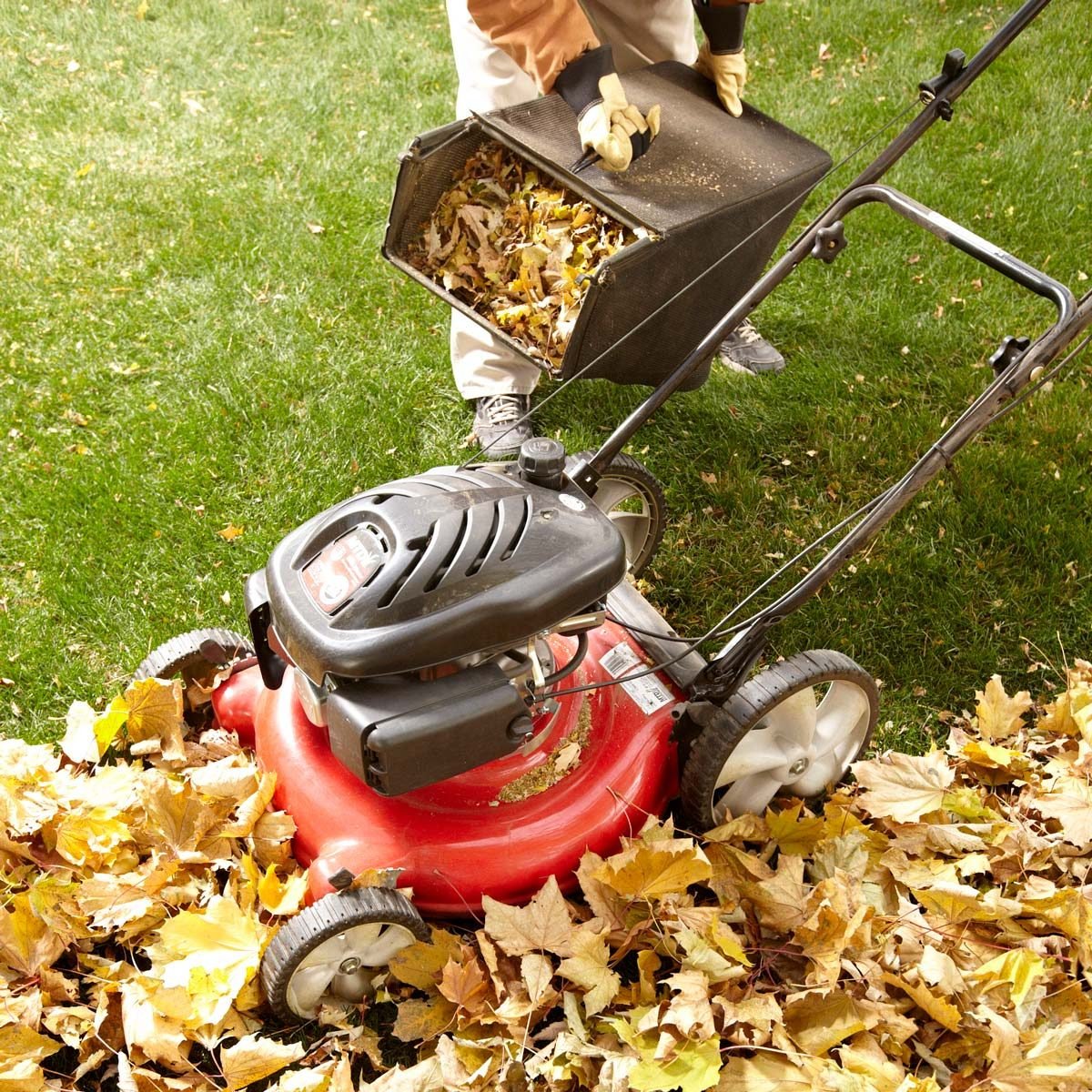
Bag as You Mow
We have a big yard and lots of trees, so I bag the leaves with my mower. It does a nice job of shredding the leaves, so they’re ready to become compost or mulch. – Gary Dowley
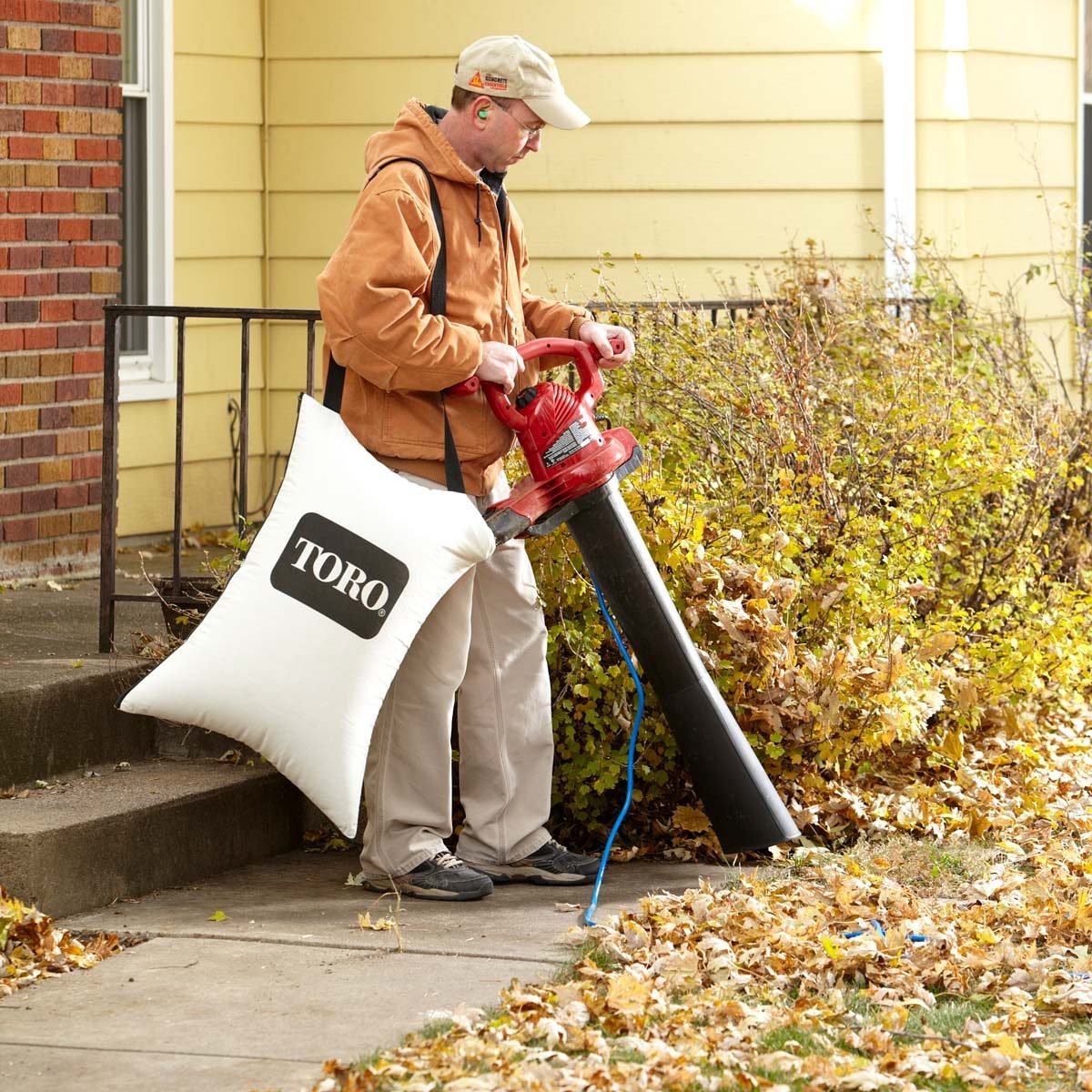
How to Get Rid of Leaves with a Yard Vac
A leaf blower/vacuum sucks up leaves fast, especially around shrubs, in flower beds and in other hard-to-rake areas. You might think that the bag would need to be emptied every five minutes, but the yard work vac minces the leaves and packs a mountain of them into just a few bags.
These inspired indoor gardening ideas will help you make it through winter.
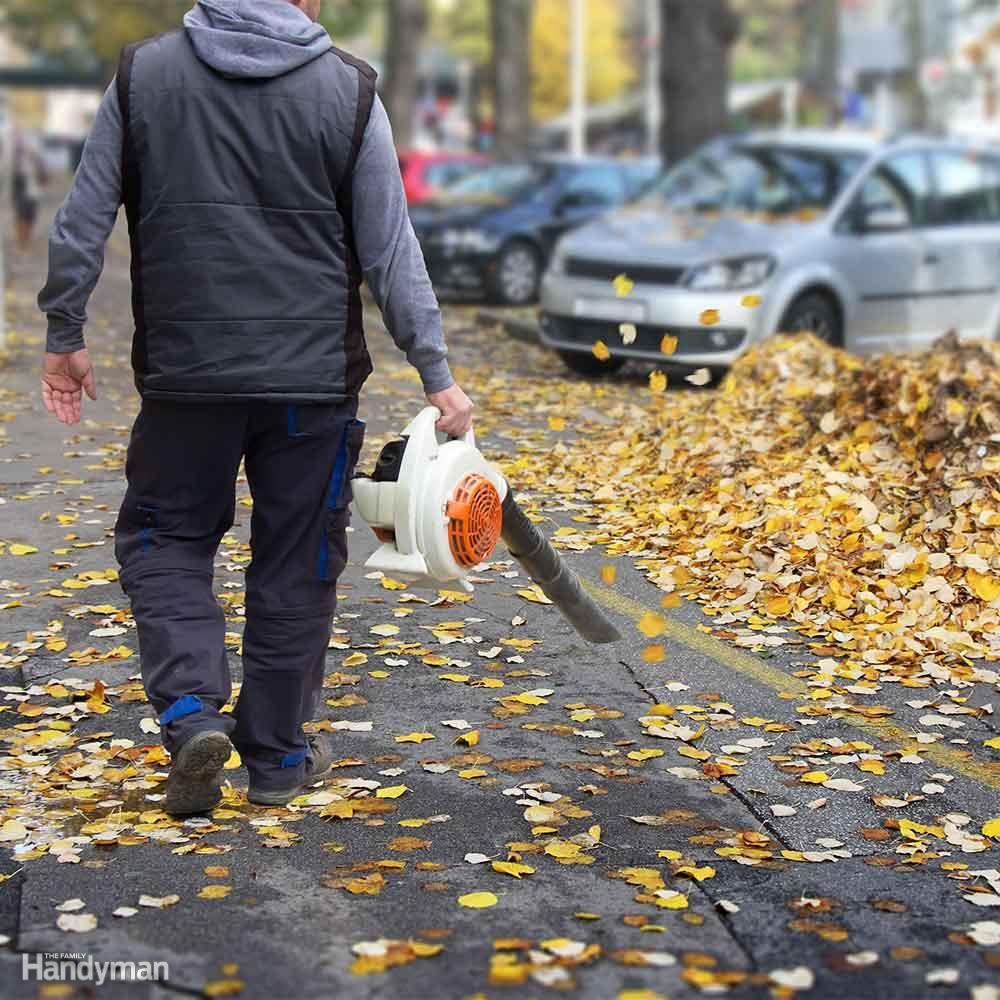
Leaf Blower Safety Tips
- Wear leather gloves to decrease vibration-induced hand and finger numbness and tingling.
- Wear hearing protection. Newer leaf blowers are usually rated below 75 decibels, but that’s based on the noise level 15 metres away from the machine. The noise level right at the machine can easily approach 100 decibels—high enough to cause permanent hearing loss. (Here are the signs of hearing loss you might be ignoring.)
- Wear eye protection and a dust respirator when shredding dry leaves and emptying the shoulder bag—shredding kicks up a lot of dust.
- Twigs, garden mulch and landscape rocks can damage the leaf blower’s impeller, so scout your yard and remove those objects before using the vacuum feature.
- Let the machine cool for 15 minutes before refuelling. Heat from a hot engine can ignite gas vapours as you fill the tank.
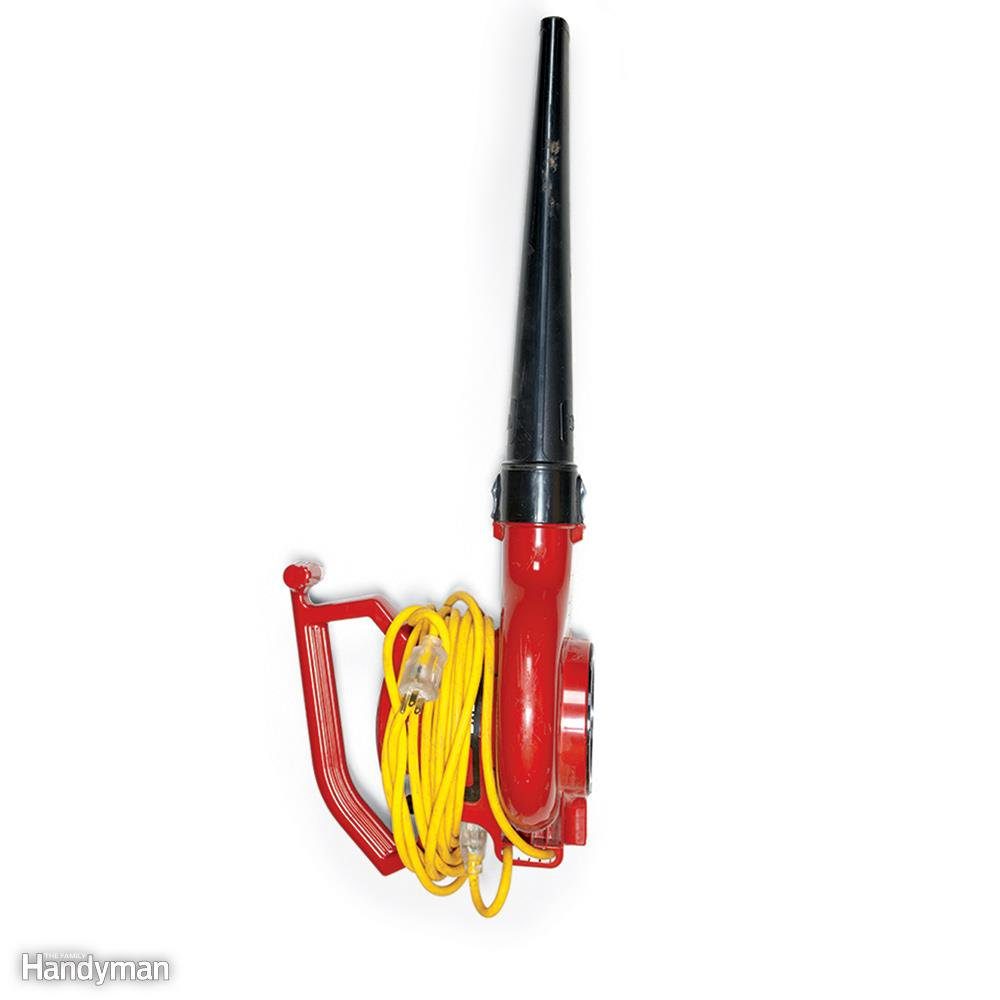
Onboard Leaf Blower Cord
The handles on most electric leaf blowers provide a perfect reel for the cord. Buy a cord that’s long enough to reach anywhere in your yard and unroll as much cord as you need, when you need it.
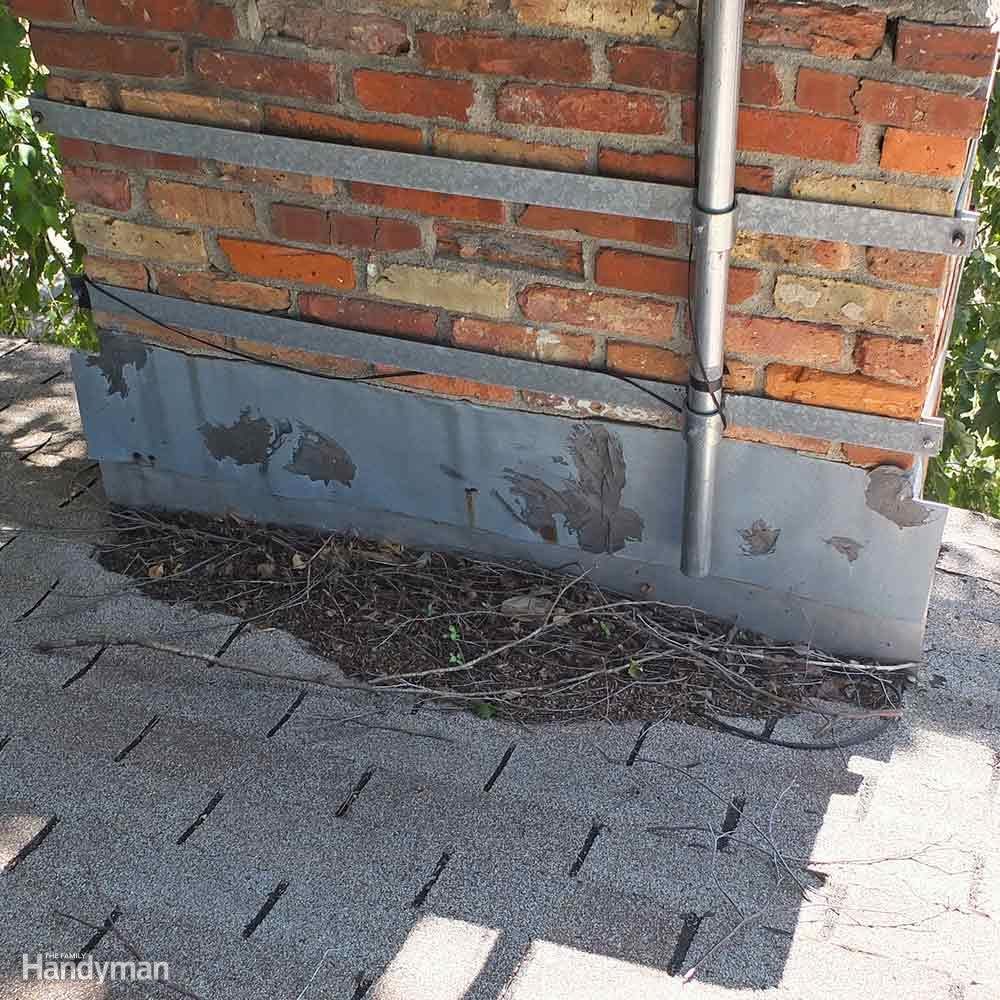
Keep the Roof Clean
Leaves and moss can trap water and cause your roof to deteriorate prematurely. You can blow the leaves off a low-pitched roof with a leaf blower. On steeper roofs, you can pull them off with a broom on an extension pole or, better yet, use a roof rake for leaves. And it’s wise to trim back all branches that are close to or touching the shingles.
Chemically treat mould, then sweep it off with a soft broom. A diluted bleach solution will kill mould but could also kill the plants on the ground below, so be careful to spray just enough to soak the mould itself. Specific roof cleaners containing fungicide are also available. Installing zinc strips at the peak of the roof can help keep mould at bay.
Discover more brilliant uses for bleach.
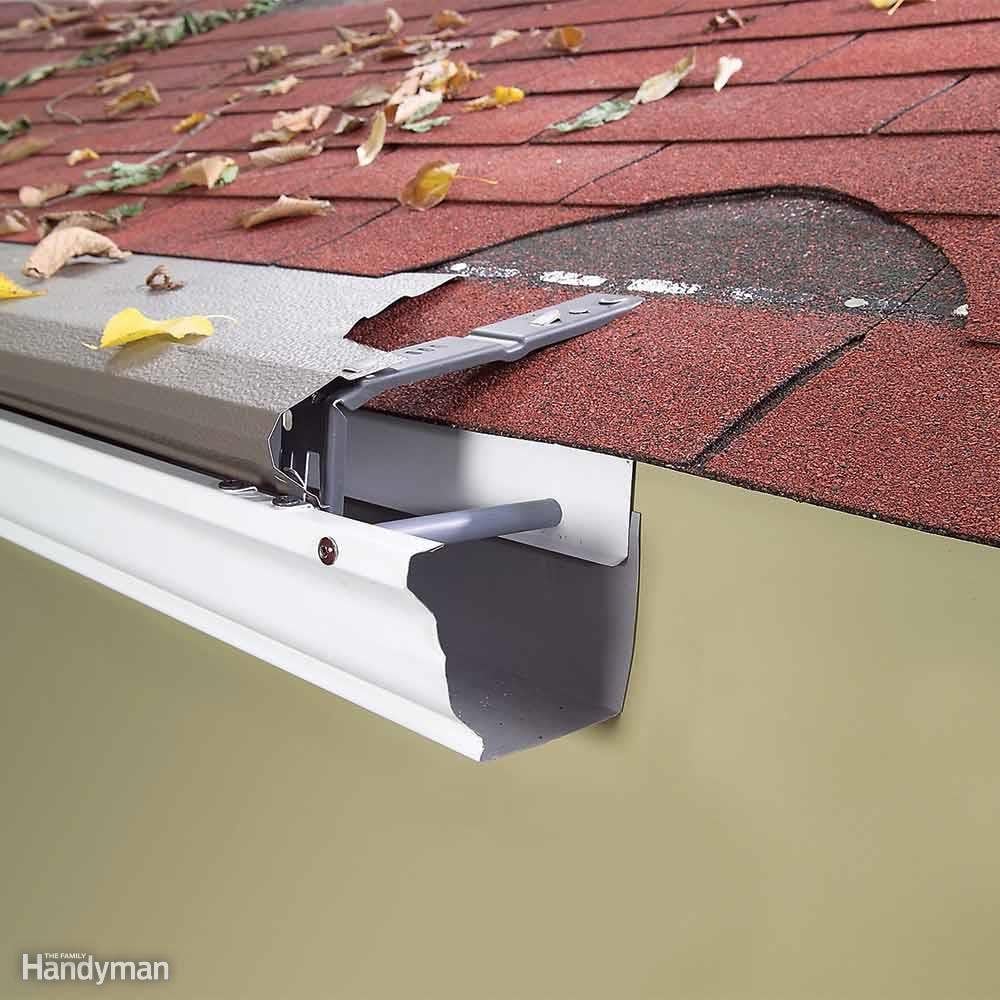
Gutter Guards Work
If you have trouble keeping small leaves and other debris from clogging your gutters, consider installing solid gutter guards. Solid guards, which cover all of the gutter except for a narrow crack to let the water through, do work well. The lip on the guards relies on surface tension to draw the water down into the gutter, while the solid covering deflects leaves and other debris that would otherwise drop in.
The guards work on every type of gutter, except plastic “C” shapes. Since the guards fit over the gutter rather than inside, they’ll cover most standard-size gutters. They’re typically attached to the gutter with brackets, with the upper edge slid under the lower shingles.
Screened gutter guards, which are much less expensive and available at home centres, don’t work as well. They’ll keep out most leaves, but you can expect smaller debris, such as seeds and pine needles, to get through. Screens also make gutter cleaning more difficult, because you have to move them aside to get at the debris. However, in some cases they may be all you need.
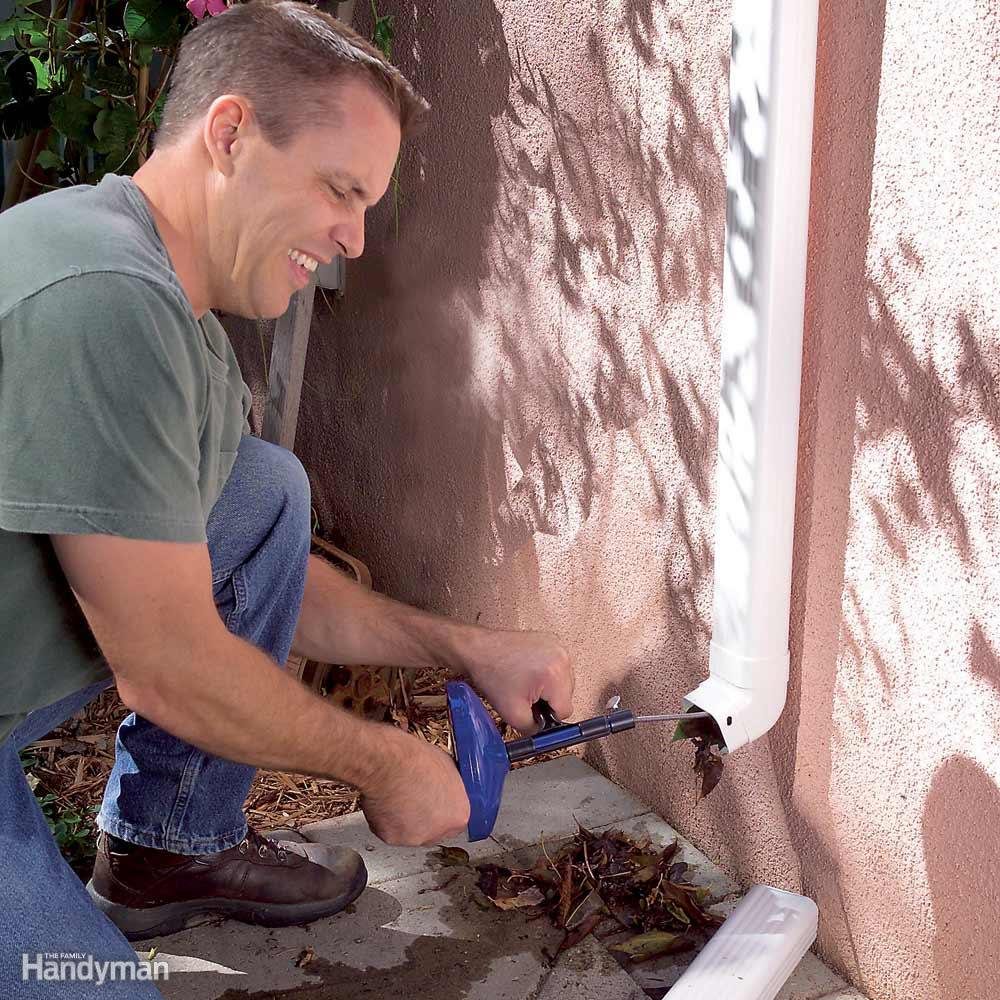
Gutter Spouts
Your plumber’s snake is a great tool for pulling clumps of wet leaves out of clogged downspouts.
Here are 100 more home improvement hacks you’ll wish you’d known sooner.
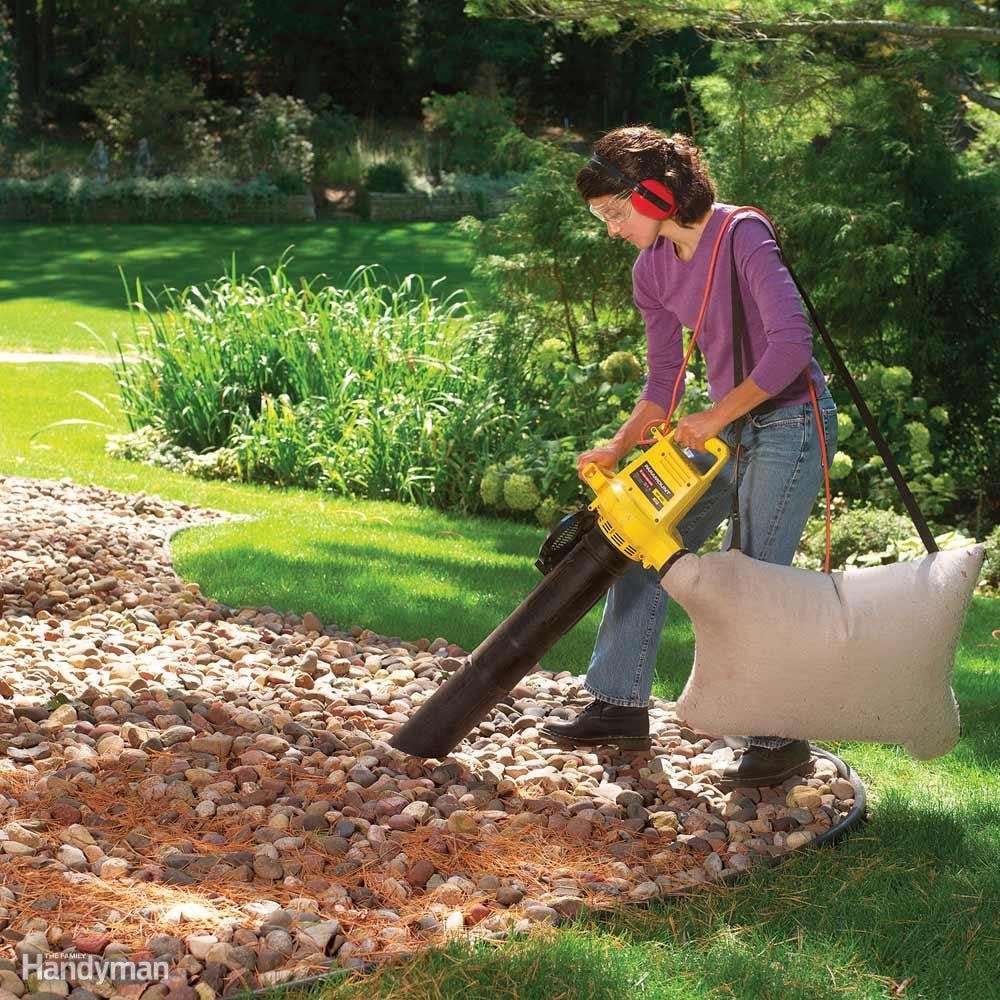
How Do I Keep My Stone Mulch Clean?
You’ll have to pull weeds occasionally, but the main problems are leaves and other debris from trees and shrubs that clutter the appearance. The easiest way to remove debris is to suck it up or blow it away with a leaf vacuum. Stone placed directly under a tree is virtually impossible to keep clean. Better to choose organic mulch, because the tree debris will blend in.
Next, check out 30 yard tool hacks that will make your life so much easier.